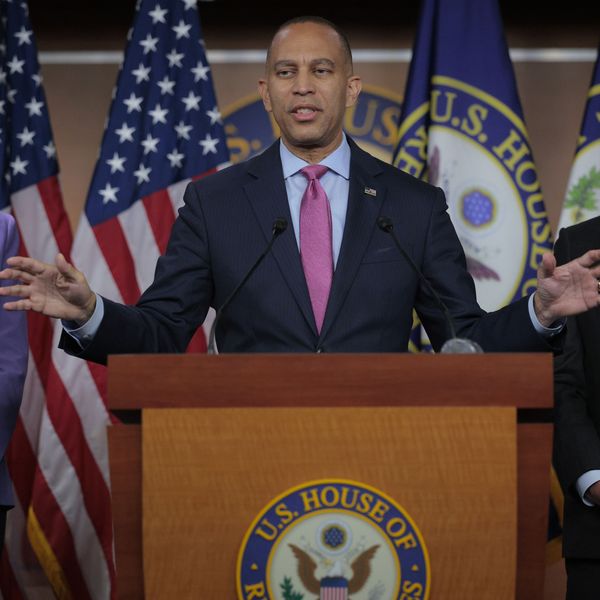The largest demonstrations in Syria since the summer have laid siege to parts of Damascus and most key towns and cities, emboldened by Arab League monitors whose presence appeared to provide protesters with cover from regime gunmen.
An estimated 500,000 people are thought to have taken to the streets across the country, with the largest and most defiant protests taking place in areas where the observers were present.
The touring members of the Arab League states could not stop the bloodshed, however, with opposition groups claiming up to 31 people were killed nationwide. Almost all deaths were reportedly in areas that the 60-man delegation is yet to visit.
At least four areas of Damascus and parts of Syria's second city, Aleppo, were occupied by large groups of demonstrators - a marked difference from the time when rallies only took place in the south and west of the country.
The main opposition group inside Syria, the Local Co-ordination Committees, claimed that 150,000 people were chanting in front of monitors in the capital, with security forces watching on.
The open defiance in the regime's power bases suggests that the support which President Bashar al-Assad had regularly boasted of in the capital may not be iron-clad. Opposition activists in Douma in northern Damascus said up to 24 protesters were wounded there by nail bombs thrown into the crowd.
Two key opposition cities, Deraa in the south, where the uprising began, and Homs near the Lebanese border, which has become the centre of the nine-month revolt, were heaving with demonstrators chanting anti-regime slogans and waving a national flag last flown before the Assad clan swept to power in Syria more than 40 years ago.
The mass turnout had been co-ordinated by opposition groups to coincide with the monitors' first Friday in Syria. The first day of the weekend has traditionally seen the most organised challenges to the regime, with protesters spilling on to the streets after Friday prayers.
Activists tried to hold ground in key public squares - to which they had been denied access for months by security forces determined to stem the momentum of protests. In Homs, Deraa and Damascus, they appeared to hold their ground - a breakthrough of sorts in a standoff that has seen a relentless regime crackdown often forcing protesters into small streets and alleyways, away from public view.
The capacity of the Arab League delegation to bring about change in Syria remains the subject of conjecture among opposition ranks.
Now into its fourth day, the monitors have shown a willingness to travel to flashpoint areas and to evade regime escorts where possible.
The presence of the delegation has also refocused world attention on Syria, which had descended into a daily grind of dozens of deaths and competing narratives.
The regime has clung to its position that the revolt is being driven by al-Qaida, while demonstrators insist that the uprising remains popular and driven by a need for radical reform inside one of the region's most uncompromising police states.
"It's better that they are here even if this doesn't end in a security council referral," said one Homs activist. "We can film at checkpoints without being shot. We can defy the military and we can show what is happening to the world."
Despite the renewed focus, the initial observations of the delegation leader, former Sudanese intelligence chief, Mustafa al-Dabi, continued to trouble opposition officials.
Dabi on Tuesday described the situation in the ravaged city of Homs as "reassuring".
His remarks were today seized on by Russia, a staunch Syrian ally, which praised the conduct of the mission so far and claimed it had provided a "reassuring" picture of the situation inside the country.
Crowds continued to film every move of the delegation, creating an added layer of scrutiny to the observer mission, which is due to remain in Syria for the next three weeks. After two months of wrangling, Syria agreed to allow entry to 150 monitors, down from the initially agreed figure of 600.
Meanwhile, the Free Syria Army, which has fought an increasingly robust armed resistance against loyalist security forces, announced that it would stop military operations while the monitors remained in the country.
Over the past four months the uprising has taken on the feel of a full blown insurgency, with daily battles between government troops and opposition forces, comprised of defectors from the military and citizens who have taken up arms.



